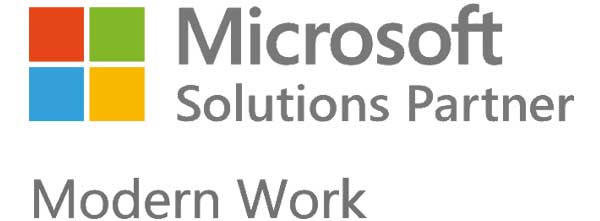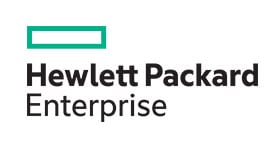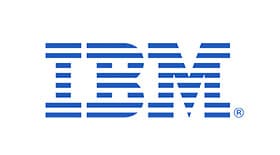Did you know the average cost of a small business cyber security incident is $39,000? If you have people working remotely or working from home, and you haven’t already done so, it’s time to get serious about cyber security.
October marks Cyber Security Awareness Month which is dedicated to educating people and businesses about online threats. As we move into the post pandemic era and more people are working at least some of the time remotely, cyber security has never been more important.
Cyber Security Awareness Month is one of – if not the – most important month in The IT Agency calendar. With the increasing number of remote workers, the attack surface has expanded, making it vital for employees and their employers to strengthen their cyber security defences.
Types of cyber threats
Cyber threats are constantly evolving, posing significant risks to people and businesses. Understanding these threats is central to developing proactive and comprehensive cyber security measures.
Malware attacks
Malicious software, commonly known as malware, includes a range of harmful software such as viruses, worms, Trojans, spyware and ransomware. Malware is designed to infiltrate systems, steal data, disrupt operations or demand a ransom for data release or system restoration.
Phishing and social engineering
Phishing involves fraudulent attempts to access sensitive information like usernames, passwords and credit card details by posing as a trustworthy entity in emails, messages or phone calls. Social engineering manipulates people into revealing confidential information or doing certain things to compromise security.
Ransomware attacks
Ransomware is a type of malware that encrypts files or entire systems, so you can’t access them. Attackers then demand a ransom for the decryption key. Failure to pay may result in permanent data loss or public exposure of sensitive information.
Distributed Denial of Service (DDoS) attacks
DDoS attacks flood a targeted system or network with web traffic, making it unavailable to genuine users. This disrupts services and may lead to financial losses and reputational damage.
Insider threats
Insider threats involve people within a business misusing their access and privileges to compromise security. It may be intentional or accidental and can result in data breaches, theft or sabotage.
Zero-day attack
A zero-day attack targets a software vulnerability the vendor may be unaware of or hasn’t released a patch for. Cybercriminals exploit these vulnerabilities before they’re fixed, allowing them unauthorised access to systems.
Man-in-the-Middle (MitM) attacks
MitM attacks happen when a hacker intercepts and changes the communication between two parties without their knowledge. May involve eavesdropping on sensitive conversations or adding malicious content into the communication.
Identity theft and fraud
Identity theft is the unauthorised use of someone else’s personal information for fraudulent activities. Cybercriminals use stolen identities to conduct financial transactions, apply for loans or commit other illegal acts, causing financial and emotional distress to the victims.
Essential cyber security practices
As these cyber threats evolve, so must our defences. Here’s some cyber security practices every business should consider to mitigate risks, protect sensitive data and ensure a secure digital environment.
Educate and train employees
A well-informed team is a major asset in the battle against cyber threats.
Providing cyber security training to employees means they’re equipped to recognise and respond to potential threats effectively. Topics should include password management, identifying phishing attempts and how to secure devices and networks.
Implement a robust authentication system
Enhanced authentication processes function as an essential barrier against unauthorised access to systems and data.
The Two-Factor Authentication (2FA)
Enforce the use of 2FA for all remote access to systems and applications. This added layer of security significantly reduces the risk of unauthorised access, even if passwords are compromised.
Secure devices and networks
Remote workers rely on devices and networks, making them critical – and often overlooked – points of vulnerability if not sufficiently secured.
Check for updates and patch management
To mitigate potential vulnerabilities, make sure devices and software are regularly updated with the latest security patches.
Use Virtual Private Networks (VPNs)
Encourage the use of VPNs to establish secure connections when accessing company resources remotely. VPNs encrypt data transmission, enhancing overall security.
Data encryption and safe storage
Protecting sensitive data is vital for remote workers, especially when handling sensitive business information.
Encryption of emails and data
Promote the use of encryption for emails and data storage to prevent unauthorised access to sensitive information, especially when transmitted or stored in the cloud.
Regular backup and disaster recovery plans
Preparation is key to managing cyber incidents effectively and minimising potential damage.
Automated and regular backups
Encourage automated and regular backups of critical data. Put into place a disaster recovery plan to ensure minimal downtime and data loss in case of a cyber-attack.
Remote work is here to stay so cyber security awareness and practices should be top of mind for every employee and business. By understanding the cyber threat landscape, implementing robust security measures and nurturing a culture of cyber awareness, together we can create a safer digital environment.
While October’s Cyber Security Awareness Month serves as a reminder to make cyber security a priority, we understand it can be hard to know where to start. Connecting with The IT Agency is a big proactive step towards safeguarding your digital assets.















